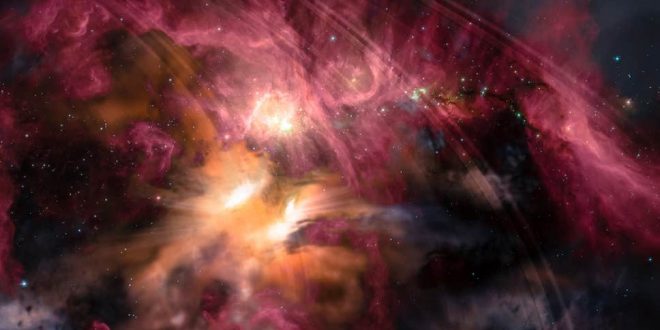Possible answer to one of science’s biggest conundrums ‘doesn’t require any concepts new to physics’
Mysterious and invisible, dark matter is believed to be all around us and is estimated to make up 85 per cent of all matter in the universe. But why can’t we find it?
Scientists are sure it exists because without the extra matter the movements and gravitational interactions of galaxies and stars make no sense.
The particle is composed of six quarks – the fundamental particles that usually combine in trios to make up protons and neutrons – the basis for atoms and matter as we currently know it.
But the team found that the six quarks in a d-star result in a boson particle, which means that when many d-stars are present they can combine together in very different ways to the usual protons and neutrons.
The research group at York suggest that in the conditions shortly after the Big Bang, many d-star hexaquarks could have grouped together as the universe cooled and expanded, and formed this condensate.
Professor Watts said: “The origin of dark matter in the universe is one of the biggest questions in science and one that, until now, has drawn a blank.
“Our first calculations indicate that condensates of d-stars are a feasible new candidate for dark matter. This new result is particularly exciting since it doesn’t require any concepts that are new to physics.”
Co-author of the paper Dr Bashkanov said: “The next step to establish this new dark matter candidate will be to obtain a better understanding of how the d-stars interact: when do they attract and when do they repel each other?
“We are leading new measurements to create d-stars inside an atomic nucleus and see if their properties are different to when they are in free space.”
The research team at York will now collaborate with scientists in Germany and the US to test their theory of dark matter and search for d-star hexaquarks in the cosmos.
The Independent
 Lebanese Ministry of Information
Lebanese Ministry of Information



